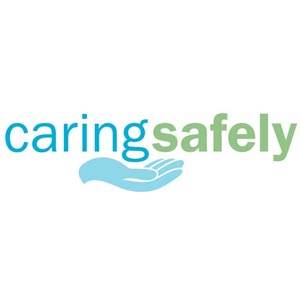Caring Safely Error Prevention Tools, which help eliminate preventable harm to everyone in a hospital setting, are some of the best habits learners can be taught.
Just ask the speech-language pathologists (SLPs) of Toronto Rehab's Stroke Inpatient Unit, who have started the conversation on day-one of student placements. They have added Caring Safely Error Prevention Tools to their standard orientation.
To highlight March's Caring Safely Error Prevention Tool of the Month – 3-way repeat-back – SLPs Lisa McQueen and Ruth Levin share how the tools are impacting their students and patients.
 We recently added a section to our standard orientation to introduce Caring Safely to our learners, with a particular emphasis on health literacy and the value of using the 3-way repeat-back tool.
We recently added a section to our standard orientation to introduce Caring Safely to our learners, with a particular emphasis on health literacy and the value of using the 3-way repeat-back tool.
We chose to highlight these concepts because we believe outcomes are maximized when patients and caregivers understand their health conditions and the strategies that support their safe transition back to the community.
A good portion of our work is providing patient and family education to patients with cognitive and language impairments that result from their stroke. We also are aware that a large percentage of the patients we see have reduced health literacy.
For example, when we are reviewing a swallowing X-ray with a patient or caregiver, explaining the risks involved with food or drink entering the airway and negotiating diet texture, we need to be confident that they understand, so we can create a treatment plan they are agreeable to.
The 3-way repeat-back is a powerful tool for telling us what the patient understands in that moment, and whether we need to present the information differently.
We like to model this tool for our clinical students and help them incorporate it into their practice, as well.
Watch and learn
Richard Holmes and Danielle Sutton are two recent students who had the opportunity to put 3-way repeat-back into practice, after seeing the tool in action, and then trying it for themselves.
"We observed our clinical educator, Ruth, using this technique, when conveying very specific swallowing strategies to a patient," says Richard.
"This patient was eating and drinking at some risk. He was able to swallow but he had difficulty clearing the food from his throat after each swallow. Heavier foods, like bread, were particularly dangerous. He needed to take very small bites and chew completely.
"Additionally, this patient needed to take a small sip of liquid after each mouthful, to clear any persistent residue.
"He really wanted to have variety in his diet, rather than just pureed foods, but he could only do this safely, by using these strategies," Richard continues.
3-Way Repeat-Back
Use this tool to clarify understanding when information is transferred. Here's how.
-
Sender provides an order, request, or information to the receiver in a clear format
-
Receiver acknowledges the receipt by a repeat-back, saying "Let me repeat that back…"
-
Sender acknowledges the accuracy of the repeat-back by saying, "That's correct."
"We wanted to help him maximize his intake but it was imperative that he understood the potential consequences of eating more solid textures, and what needed to be done to minimize them."
After explaining the risks, and suggesting some alternatives, Ruth said to him, 'I've given you a lot of information and I want to be sure it has made sense. Can you tell me in your own words, a few things that will help you to swallow food more safely?'
"We saw the patient struggle to explain back the information which was critical to his care," Ruth says. "Without witnessing this repeat-back, we may have just left his room assuming that he understood everything."
It was only after repeated explanations, simplifications, and written cues that the patient was accurately able to demonstrate full comprehension.
"It was fascinating to see how this relatively simple tool was able to open up a dialogue with the patient, to ensure his safety," says Danielle.
Applying new knowledge
Richard and Danielle then had the chance to practice this technique throughout their placement, where they got more comfortable with applying it in real life.
"At first we were concerned that the patients would think we were testing them, or that we were assuming they didn't understand," says Danielle.
"We felt a bit uncomfortable, but once we reflected back to the nuanced wording used by our supervisor, it became more like a partnership, instead of a test," says Richard.
"We remembered to use phrases like, 'I just want to make sure I've explained things clearly,' and were careful to give the patient time to process and ask questions.
"In the end, I felt much more certain that the patient had understood my recommendations and I could document the same, with confidence."
